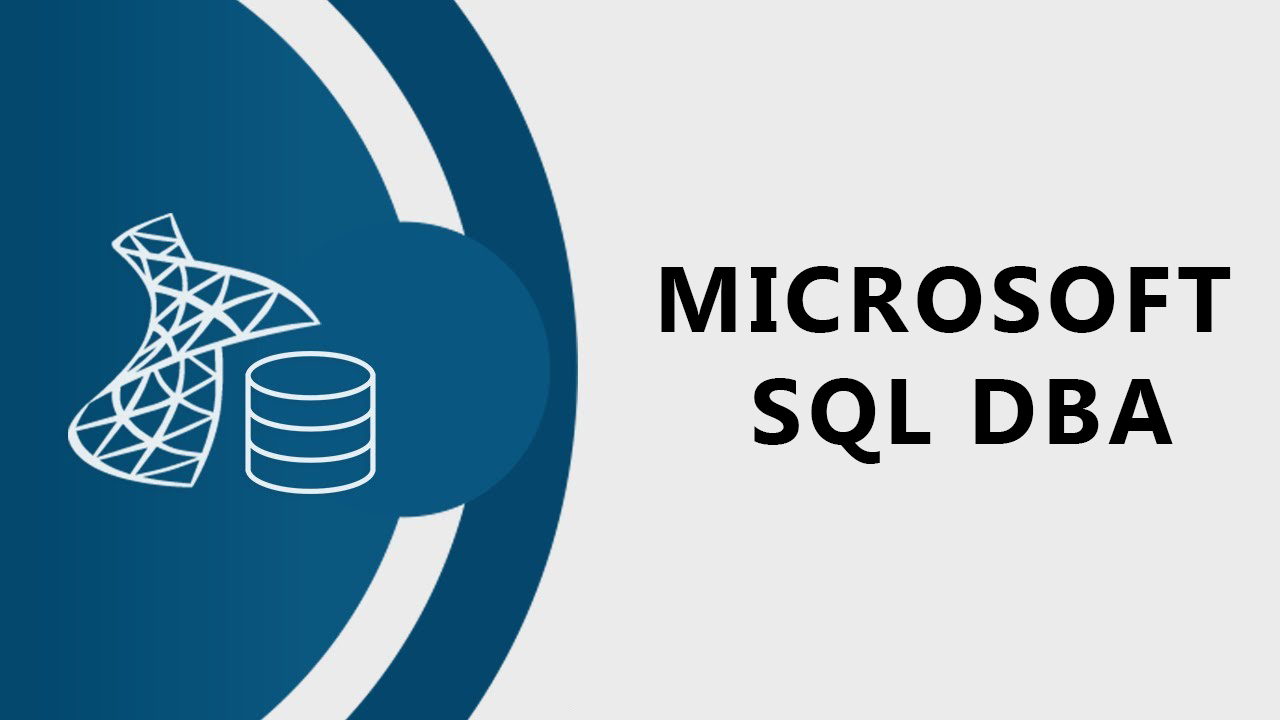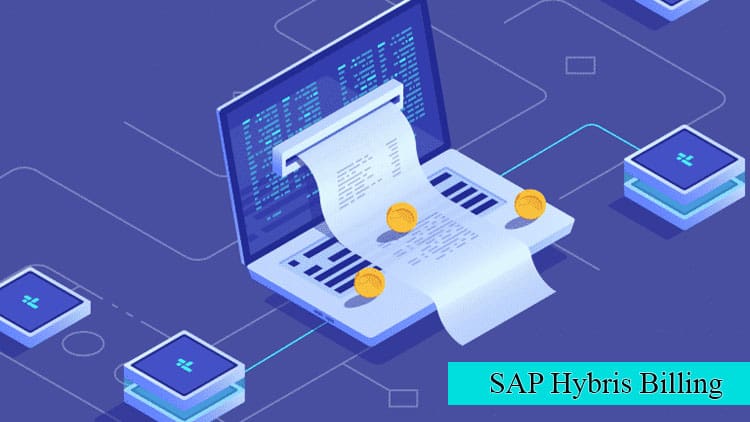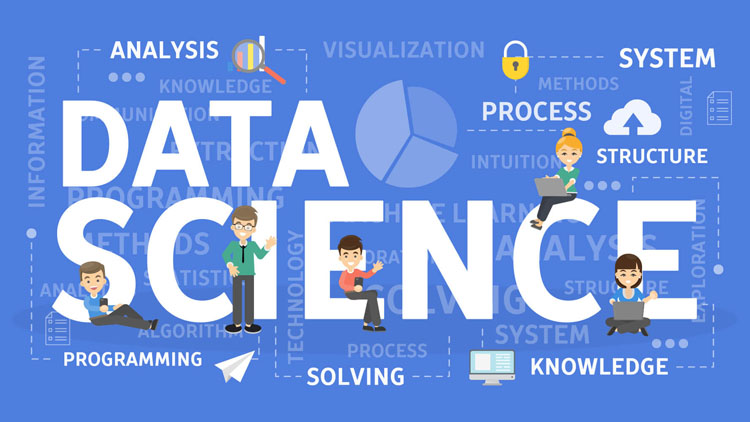Key Features of MS Sql DBA training training online
The Ms Sql DBA is a chief aspect in the RDBMSsystem, it helps in storingnad retrieve data as per the platforms.
MS SQL DBA Online Training
Flexible Program Delivery
Complete Online Assistance
Self Paced Learning Option Available
Trending Courses
Better Course Fee
Structure than Market.
Why choose us
Self-paced Videos
- Learn Your Favourite Skill In Your Spare Time
- Gain Practical Training With High Quality Recorded Videos Taught By Industry Experts.
- Watch Complex Topics As Many Times As Possible.
- Gain Industry-Oriented Skills.
- Solve Your Doubts With Real-Time Expert Trainers.
Live Online Training
- Choose The Time That Suits You.
- Attend A Demo Before Joining A Course
- Solve Your Doubts In Real-Time
- Interact With The Trainer And Share Your Views
- Get Access To Google Drive To Revise The Topics.
- Get The Guidance To Clear The Certification Exam
Corporate Training
- Train Your Workforce With The Latest Skills.
- Customize The Course Content To Match Your Requirements.
- Provide The Required Knowledge To Your Human Resource To Clear The Certification Exam.
- Schedule Training As Per Your Requirement.
- Choose Your Modes Of Training Like Live Online/ Classroom/ Self-Paced.
MS SQL DBA Course Overview
Become a professional in database administration by enrolling into experts curated MS SQL Server DBA Training From India. This course will provide you with all the knowledge required to manage SQL databases as an administrator. In this MS SQL DBA Training, you will gain fundamental knowledge of the concepts such as database design, database administration, implementation, maintenance, support and a lot more other concepts. As a part of this MS SQL DBA training, you will be working with real-world projects to gain practical exposure. Become a certified MS SQL Server DBA professional by enrolling into SK Trainings.
Prerequisites:
To take up this MS SQL Server DBA course you need a basic knowledge of computer programming.
Course Objectives :
Microsoft SQL Server DBA is an RDBMS system developed by Microsoft and its main purpose is to store and retrieve the data as requested by applications. SK Trainings offers a comprehensive SQL Server DBA training to provide you with complete knowledge of various concepts such as relational database, automation of SQL Server, SQL queries, database management, securing the database, etc. During the training, you will also be prepared for clearing the SQL Server DBA certification exam. Get the Best SQL Server DBA Training From Hyderabad by joining SK Trainings.
After completion of this SQL Server DBA training you will be able to gain proficiency in the following areas:
- SQL Server Installation and its components
- Storage design and database architecture
- Configuration of security permissions
- Test connectivity and feature access
- SQL Server standby database configuration for reporting purpose
- SQL Server Agent management
- Designing and implementing the migration strategy
- SQL Server Instance configuration
- Back-up strategies configuration and management
- Database restoring, implementation and maintenance
- Implementing AlwaysOn
- MS SQL is one of the widely accepted databases by global organizations to manage their large volumes of data.
- There is a huge demand for database administrators to manage and secure database servers.
- According to Indeed.com, the average compensation received by a SQL Database Administrator amounts to $91,000 per annum.
Following are the professionals who get benefited from learning this course:
- Database Developers and Administrators
- Project Managers, Testers, and Analysts.
- Hadoop and Bigdata professionals
Yes, upon the successful completion of the MS SQL Server DBA training you will receive the course completion certificate from SK Trainings. This certificate is valid across all the top MNCs and simplifies your job search process.
Yes, you will get all assistance from the MS SQL experts to clear your certification exam. Moreover, you will be provided with the experts designed MS SQL Server DBA Course material to clear your certification exam.
MS SQL DBA Training Course Content :
- Planning Your Installation
- Evaluating Installation Requirements
- Designing the Installation
- Planning Scale Up versus Scale out Basics
- Shrinking and Growing Databases
- Designing the Storage for New Databases
- Remembering Capacity Constraints
- Identifying a Standby Database for Reporting
- Identifying Windows-Level Security and Service-Level Security
- Performing a Core Mode Installation
- Benchmarking a Server
- Configuring SQL Server Instances
- Instance-Level Settings
- Database Configuration and Standardization
- Distributed Transaction Coordinator
- Configuring Database Mail
- Revision on chapter 1 and chapter 2
- Q and A session
- Deploying and Configuring Analysis Services
- Deploying and Configuring Reporting Services
- Deploying and Configuring SharePoint Integration
- Configuring SQL Server Integration Services Security
- Managing Full-Text Indexing
- Configuring FILESTREAM
- Configuring File Tables
Lesson 2: Managing and Configuring Databases
- Designing and Managing File groups
- Configuring and Standardizing Databases
- Understanding Contained Databases
- Using Data Compression
- Encrypting Databases with Transparent Data Encryption
- Partitioning Indexes and Tables
- Managing Log Files
- Using Database Console Commands
- Upgrading an Instance to SQL Server 2012
- Migrating a Database to a SQL Server 2012 Instance
- Copying Databases to Other Servers
- Migrating SQL Logins
Lesson 2: Managing and Configuring Databases
- Designing and Managing File groups
- Lesson porting Data
- Copying and Exporting Data
- Using the SQL Server Import and Export Wizard
- Using BCP to Import and Export Data
- Importing Data by Using BULK INSERT
- Importing Data by Using OPENROWSET (BULK)
- Using Format Files
- Preparing Data for Bulk Operations
- SELECT INTO
- SQL Logins
- Server Roles
- User-Defined Server Roles
- Credentials
Lesson 2: Managing Users and Database Roles
- Database Users
- Database Roles
- Contained Users
- Least Privilege
- Application Roles
- Executing Jobs by Using SQL Server Agent
- Managing Alerts
- Managing Jobs
- Monitoring Multi-Server Environments
- Understanding Backup Types
- Backing up System Databases
- Backing up Replicated Databases
- Backing up Mirrored Databases
- Backing up AlwaysOn Replicas
- Using Database Checkpoints
- Using Backup Devices
- Backing Up Media Sets
- Performing Backups
- Viewing Backup History
Lesson 3: Restoring SQL Server Databases
- Restoring Databases
- Performing File Restores
- Performing Page Restores
- Restoring a Database Protected with Transparent Data
- Encryption
- Restoring System Databases
- Restoring Replicated Databases
- Checking Database Status
- Understanding Securable
- Assigning Permissions on Objects
- Managing Permissions by Using Database Roles
- Protecting Objects from Modification
- Using Schemas
- Determining Effective Permissions
Lesson 2: Troubleshooting SQL Server Security
- Troubleshooting Authentication
- Troubleshooting Certificates and Keys
- Troubleshooting Endpoints
- Using Security Catalog Views
Lesson 3: Auditing SQL Server Instances
- Using SQL Server Audit
- Configuring Login Auditing
- Using c2 Audit Mode
- Common Criteria Compliance
- Policy-Based Management
- Database Mirroring
- Mirroring Prerequisites
- Configuring Mirroring with Windows Authentication
- Configuring Mirroring with Certificate Authentication
- Changing Operating Modes
- Role Switching and Failover
- Monitoring Mirrored Databases
- Upgrading Mirrored Databases
Lesson 2: Database Replication
- Replication Architecture
- Replication Types
- Snapshot Replication
- Transactional Replication
- Peer-to-Peer Transactional Replication
- Merge Replication
- Replication Monitor
- Controlling Replication of Constraints, Columns, and Triggers
- Heterogeneous Data
- Log shipping Prerequisites
- Benefits of Log shipping
- Configuring Log shipping between two servers
- Troubleshooting Log shipping issues
- Fulfilling Edition Prerequisites
- Creating a Windows Server 2008 R2 Failover Cluster
- Installing a SQL Server Failover Cluster
- Multi-Subnet Failover Clustering
- Performing Manual Failover
- Troubleshooting Failover Clusters
Lesson 2: AlwaysOn Availability Groups
- What Are AlwaysOn Availability Groups?
- Meeting Availability Group Prerequisites
- Configuring Availability Modes
- Selecting Failover Modes
- Configuring Readable Secondary Replicas
- Deploying AlwaysOn Availability Groups
- Using Availability Groups on Failover Cluster Instances
- Getting Started with Performance Monitor
- Capturing Performance Monitor Data
- Creating Data Collector Sets
Lesson 2: Working with SQL Server Profiler
- Capturing Activity with SQL Server Profiler
- Understanding SQL Trace
- Reviewing Trace Output
- Capturing Activity with Extended Events Profiler
Lesson 3: Monitoring SQL Server.
- Monitoring Activity
- Working with Activity Monitor
Lesson 4: Using the Data Collector Tool.
- Capturing and Managing Performance Data
- Analyzing Collected Performance Data
Lesson 5: Identifying Bottlenecks
- Monitoring Disk Usage
- Monitoring Memory Usage
- Monitoring CPU Usage
- Understanding the Anatomy of a Balanced Tree (B-Tree)
- Understanding Index Types and Structures
- Designing Indexes for Efficient Retrieval
- Understanding Statistics
- Creating and Modifying Indexes
- Tracking Missing Indexes
- Reviewing Unused Indexes
Lesson 2: Identifying and Resolving Concurrency Problems
- Defining Transactions and Transaction Scope
- Understanding SQL Server Lock Management
- Using AlwaysOn Replicas to Improve Concurrency
- Detecting and Correcting Deadlocks
- Using Activity Monitor
- Diagnosing Bottlenecks
- Using Reports for Performance Analysis
The model database, as its name implies, serves as the model (or template) for all databases created on the same instance. If the model database is modified, all subsequent databases created on that instance will pick up those changes, but earlier created databases will not. Note that TEMPDB is also created from the model every time SQL Server starts up.
SQL Server has three types of replication: Snapshot, Merge, and Transaction. Snapshot replication creates a snapshot of the data (point-in-time picture of the data) to deliver to the subscribers. This is a good type to use when the data changes infrequently, there is a small amount of data to replicate, or large changes occur over a small period of time. Merge replication uses a snapshot to seed the replication. Changes on both sides of the publication are tracked so the subscriber can synchronize with the publisher when connected. A typical use for this type of replication is in a client and server scenario. A server would act as a central repository and multiple clients would independently update their copies of the data until connected. At which time, they would all send up their modifications to the central store. Transaction replication also begins with a snapshot only this time changes are tracked as transactions (as the name implies). Changes are replicated from publisher to subscriber the same as they occurred on the publisher, in the same order as they occurred, and in near real-time. This type of replication is useful when the subscriber needs to know every change that occurred to the data (not point-in-time), when the change volume is high, and when the subscriber needs near real-time access to the changes.
Checkpoints, whether scheduled or manually executed, cause the transaction log to be truncated up to the beginning of the oldest open transaction (the active portion of the log). That is, the dirty pages from the buffer cache are written to disk. Storing committed transactions in the cache provides a performance gain for SQL Server. However, you do not want the transaction log to get too big because it might consume too many resources and, should your database fail, take too long to process to recover the database. One important thing to note here is that SQL Server can only truncate up to the oldest open transaction. Therefore, if you are not seeing the expected relief from a checkpoint, it could very well be that someone forgot to commit or rollback their transaction. It is very important to finalize all transactions as soon as possible.
You can set the fill factor on your indexes. This tells SQL Server how much free space to leave in the index pages when re-indexing. The performance benefit here is fewer page splits (where SQL Server has to copy rows from one index page to another to make room for an inserted row) because there is room for growth built into the index.
SQL profiler is the SQL Server utility you can use to trace the traffic on the SQL Server instance. Traces can be filtered to narrow down the transactions that are captured and reducing the overhead incurred for the trace. The trace files can be searched, saved off, and even replayed to facilitate troubleshooting.
SQL Agent is the job scheduling mechanism in SQL Server. Jobs can be scheduled to run at a set time or when a specific event occurs. Jobs can also be executed on demand. SQL Agent is most often used to schedule administrative jobs such as backups.
DBCC statements are Database Console Commands and come in four flavors: Maintenance, Informational, Validation, and Miscellaneous. Maintenance commands are those commands that allow the DBA to perform maintenance activities on the database such as shrinking a file. Informational commands provide feedback regarding the database such as providing information about the procedure cache. Validation commands include commands that validate the database such as the ever-popular CHECKDB. Finally, miscellaneous commands are those that obviously don’t fit in the other three categories. This includes statements like DBCC HELP, which provides the syntax for a given DBCC command.
Update Statistics is used to force a recalculation of query optimization statistics for a table or indexed view. Query optimization statistics are automatically recomputed, but in some cases, a query may benefit from updating those statistics more frequently. Beware though that re-computing the query statistics causes queries to be recompiled. This may or may not negate all performance gains you might have achieved by calling update statistics. In fact, it could have a negative impact on performance depending on the characteristics of the system.
SQL Server supports Windows Authentication and mixed-mode. Mixed-mode allows you to use both Windows Authentication and SQL Server Authentication to log into your SQL Server. It’s important to note that if you use Windows Authentication, you will not be able to log in as sa.
The answer would be depending on the versions you have worked on, I would say I have experience working in SQL Server 7, SQL Server 2000, 2005 and 2008. If you have worked only some version be honest in saying that, remember, no one would be working on all versions, it varies from individual to individual.
In a clustered index, the leaf level pages are the actual data pages of the table. When a clustered index is created on a table, the data pages are arranged accordingly based on the clustered index key. There can only be one Clustered index on a table. In a Non-Clustered index, the leaf level pages do not contain data pages instead it contains pointers to the data pages. There can multiple non-clustered indexes on a single table.
Failover Clustering, Database Mirroring, Log Shipping, and Replication are the High-Availability features available in SQL Server. I would recommend reading this blog of mine which explains the differences between these 4 features.
DCL stands for Data Control Language.
Fill Factor is a setting that is applicable to Indexes in SQL Server. The fill factor value determines how much data is written to an index page when it is created/rebuilt.
The easiest way to find and change the default fill factor value is from Management Studio, right-click the SQL Server and choose properties. In the Server Properties, choose Database Settings, you should see the default fill factor value in the top section. You can change to the desired value there and click OK to save the changes. The other option of viewing and changing this value is using
There are 3 recovery models available for a database. Full, Bulk-Logged and Simple are the three recovery models available.
Replication is a feature in SQL Server that helps us publish database objects and data and copy (replicate) it to one or more destinations. It is often considered as one of the High-Availability options. One of the advantages of Replication is that it can be configured on databases which are in simple recovery model.
The 3 main components in Replication are Publisher, Distributor, and Subscriber. The publisher is the data source of a publication. The distributor is responsible for distributing the database objects to one or more destinations. The subscriber is the destination where the publishers data is copied/replicated.
I would go to the SQL Server Configuration Manager. In the left pane of the tool, I would select SQL Server Services, the right side pane displays all of the SQL Server Services/components that are installed on that machine. If the Service is displayed as (MSSQLSERVER), then it indicates it is a default instance, else there will be the Instance name displayed.
Let us solve your all MS Sql DBA training online training doubts.
Talk to us for a glorious career ahead.
+91 9441803173
Frequently Asked Questions
We make sure that you are never going to miss a class at SK Trainings. If you do so you can choose from either of the below two options.
- You can view the recorded sessions sent to you on a regular basis.
- You can also attend the other live batch for the missed session.
The industry trainers who are working with us are highly qualified and possess a minimum of 10-12 years of experience in the IT field. We follow a critical procedure while selecting a trainer which include profile selection, screening, technical evaluation and validating presentation skills. The trainers who get top ratings by students are given priority and continue to teach with us.
You need not worry about anything. Once you join SK trainings, you will get lifetime assistance from our support team and they are available 24/7 to assist you.
Online training is an interactive session where you and the trainer are going to connect through the internet at a specific time on a regular basis. They are interactive sessions and you can interact with trainers and ask your queries.
Yes, you will be eligible for two types of discounts. One is when you join as a group and the other is when you are referred by our old student or learner.
Yes, you will gain lifetime access to course material once you join SK Trainings.
Our trainer will provide you server access and help you install the tools on your system required to execute the things practically. Moreover, our technical team will be there for you to assist during the practical sessions.
Yes, Sk Trainings accepts the course fee on an instalment basis to make the students feel convenient.
SK Trainings is one of the top online training providers in the market with a unique approach. We are one-stop solutions for all your IT and Corporate training needs. Sk Trainings has a base of highly qualified, real-time trainers. Once a student commits to us we make sure he will gain all the essential skills required to make him/her an industry professional.
Till now SK Trainings has trained thousands of aspirants on different tools and technologies and the number is increasing day by day. We have the best faculty team who works relentlessly to fulfill the learning needs of the students. Our support team will provide 24/7 assistance.
SK Trainings offers two different modes of training to meet student requirements. Either you can go for Instructor led-live online classes or you can take high-quality self-paced videos. Even if you go with self-paced training videos you will avail all the facilities offered for the live sessions students.
Yes, each course offered by the SK Trainings is associated with Two live projects. During the training, students are introduced to the live projects implementation process.
Yes, absolutely you are eligible for this. All you need to do is pay the extra amount and attend live sessions.
You must experience the course before enrolling.
MS SQL DBA Training Certification
Train yourself into a certified MS SQL DBA Training by enrolling in the SK Trainings MS Sql DBA training training. You will get through knowledge by our expert trainer and also for several database administrations. You can become an expert in areas such as database design, database administration, implementation, maintenance, support and a lot more other concepts. Real-time knowledge is obtained by working in MS Sql DBA projects. Join the SK Training’s MS Sql DBA certification course training and learn from the expert MS Sql DBA trainings.
Get Certified
Need to know more about MS Sql DBA trainings online training and Certification
Avail Free Demo Classes Now



Trending Courses
Our core aim is to help the candidates with updated and latest courses. We offer the latest industry demanded courses to the individuals. Following are some of the trending courses.
Wish to Know More About MS SQL DBA Online Course & Training Methodology
If you want to judge how good a course is then you got to experience it. At SK Trainings you will get demo classes for free. There will be no fabrication in these classes as they are live. Feel It - Learn & Then enroll for the course.

















